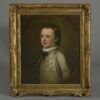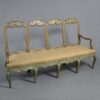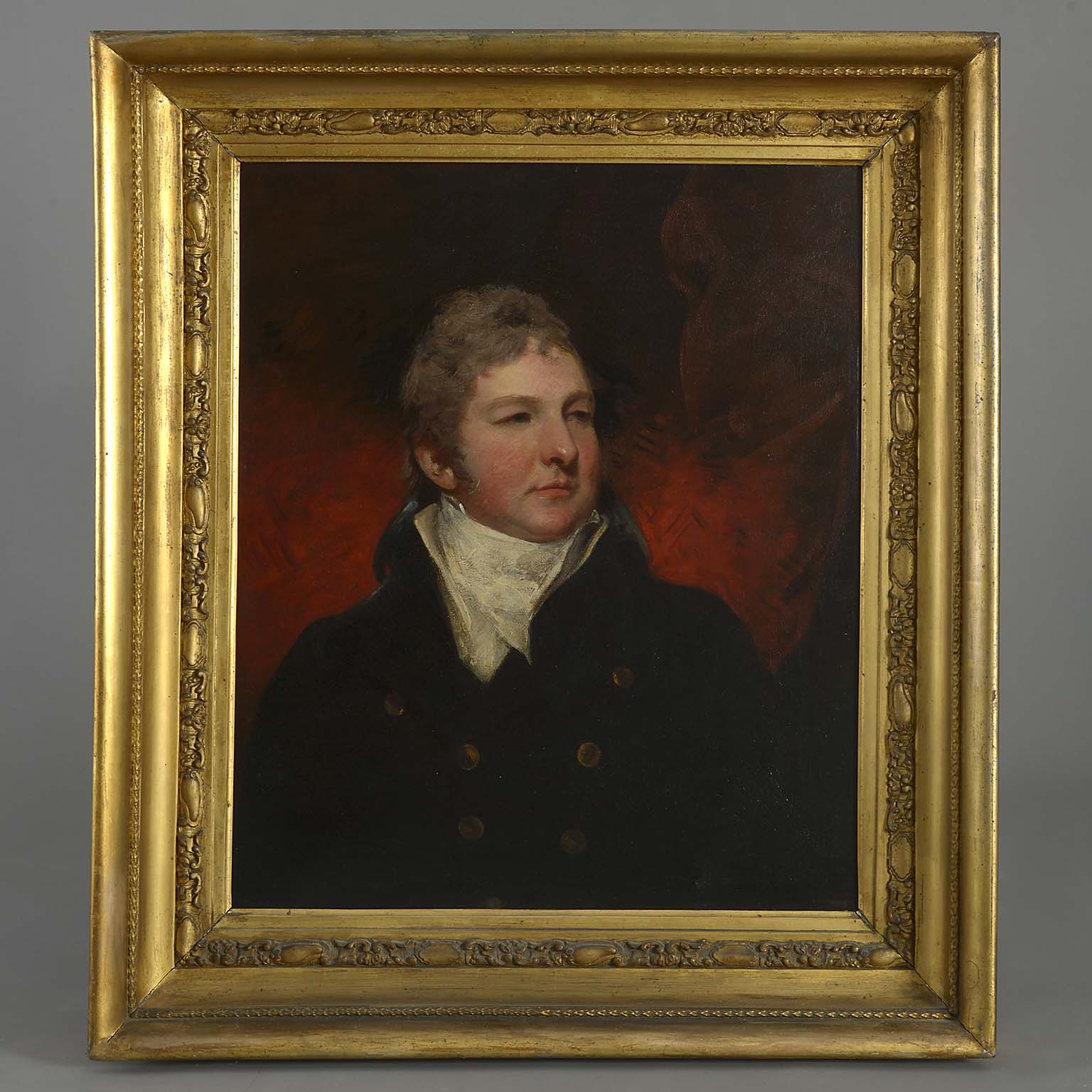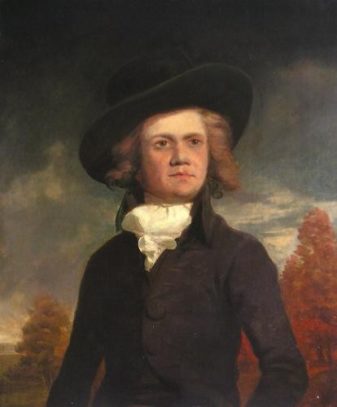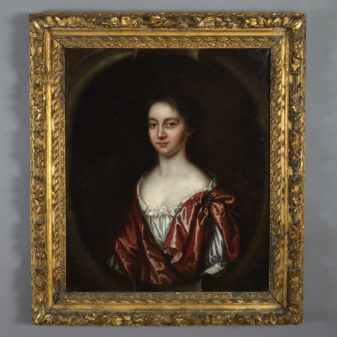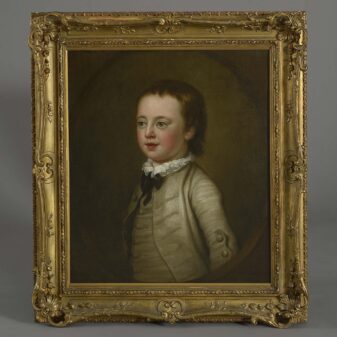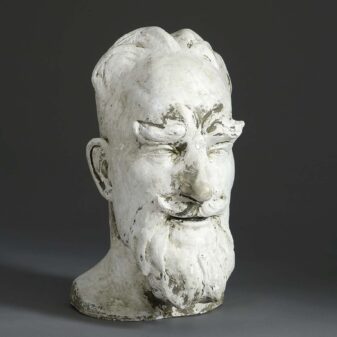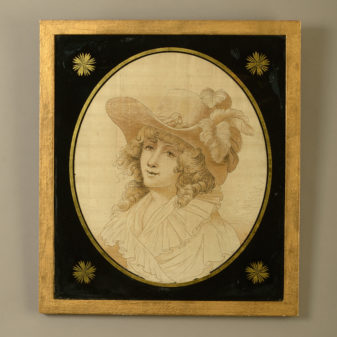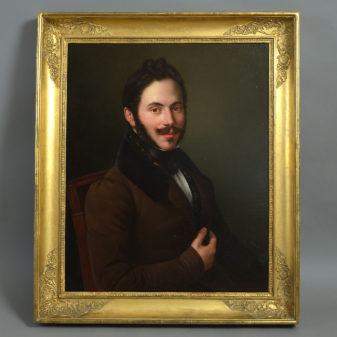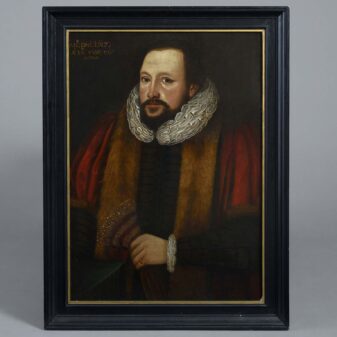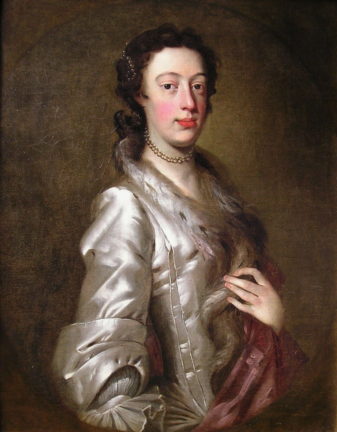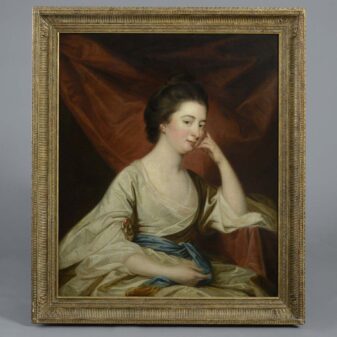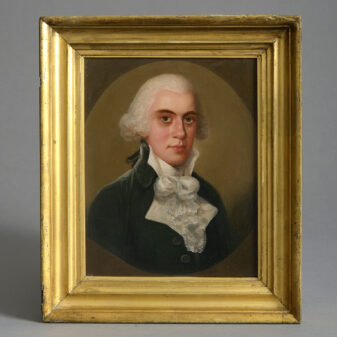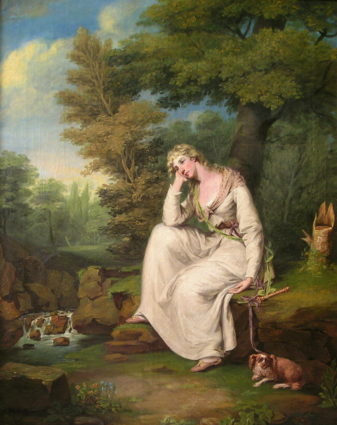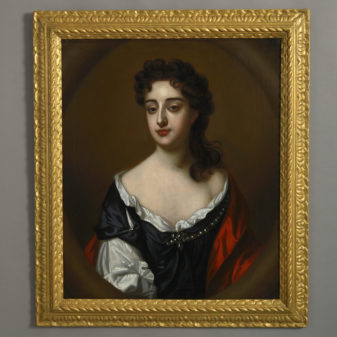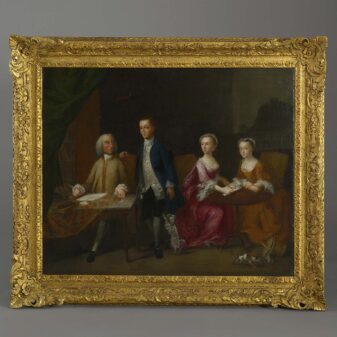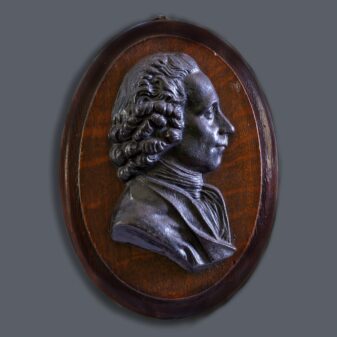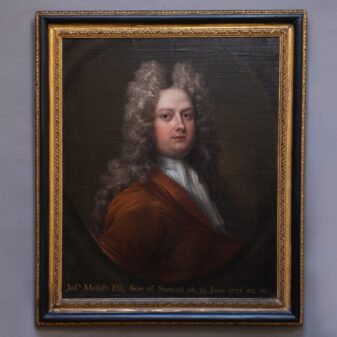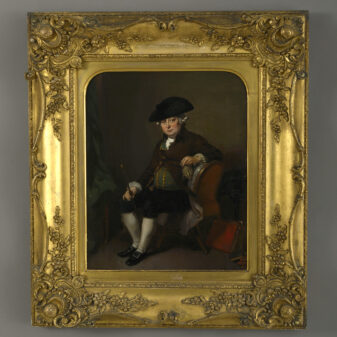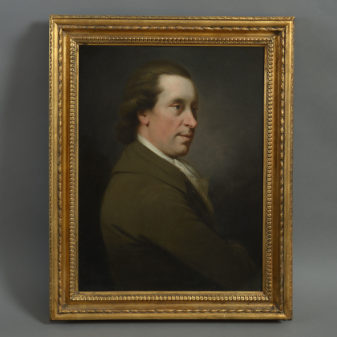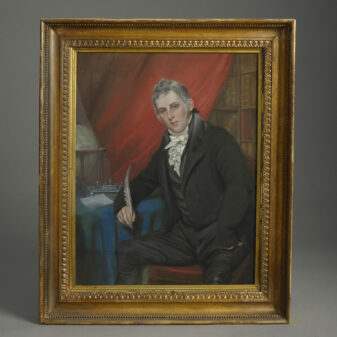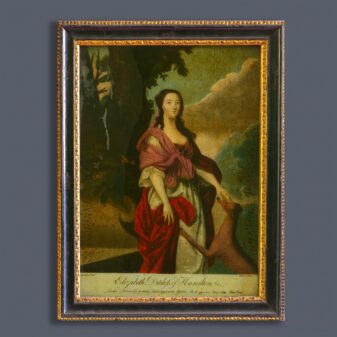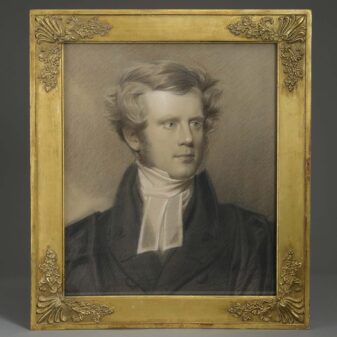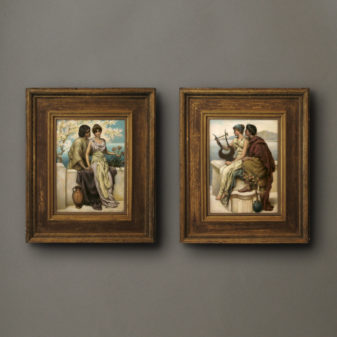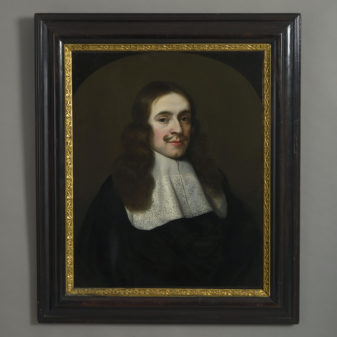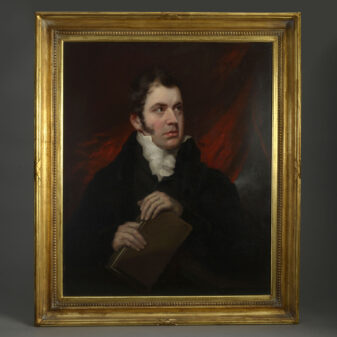Oil on canvas. Dimensions refer to size of frame.
Provenance: By family descent
George Byfield was a pupil of Sir Robert Taylor (1714-1788) and apprentice to John Plaw (c.1745-1820) and exhibited regularly at the Royal Academy from 1780 onwards. From 1803 he acted as surveyor to the estates of the Dean and Chapter of Westminster, before entering into partnership in 1810 with Henry Hake Seward, a pupil of Sir John Soane and district surveyor of St Martin-in-the-fields and St Ann’s Soho. He designed several prisons, including those at Bury St Edmunds, Suffolk (1801–1803), the spectacular rusticated entrance-front of which survives), and Canterbury, Kent (1806–1808) —now university lecture theatres. He was also responsible for a number of country houses which are often overlooked but include Perdiswell Park (1787-1788), Craycombe House (1791), the striking Hurlingham House (now a club), Fulham, London (1797–1798), and for completing houses in Dean’s Yard, Westminster (1809).
He married Rhoda Henrietta Abbott of St Georges Square London in November 1783. Politically he supported the Whigs under Charles James Fox and resided in Craven Street, London until his death in August 1813. J. Mills and J. Phillips were his pupils and John Coney, the architectural draughtsman, was in his office from 1805-1808.
John Hoppner completed this portrait during the last decade of Byfiled’s life when he was at the height of his productivity as an architect. Distinctive brushwork, colour and spontaneity has produced a portrait of great character, emotion and presence. Along with Gainsborough and Reynolds, Hoppner was one of the leading portrait painters in late eighteenth-century Britain. He entered the Royal Academy Schools in 1775, winning a gold medal in 1782. A regular contributor to the Royal Academy exhibitions he quickly established himself as a fashionable portraitist being appointed painter to the Prince of Wales in 1789. Inspired by the later works of Reynolds, he soon developed an individual recognisable style. From the 1790s he was also the only serious rival to the young Thomas Lawrence and with him was responsible for painting the finest Romantic portraits of the Regency period.
A complete gazetteer of Byfield’s architectural achievements is available.
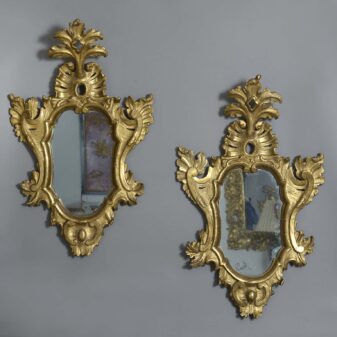 Pair of Mid-18th Century Venetian Giltwood Rococo Period Girandole Mirrors
1 × £5,750
Pair of Mid-18th Century Venetian Giltwood Rococo Period Girandole Mirrors
1 × £5,750 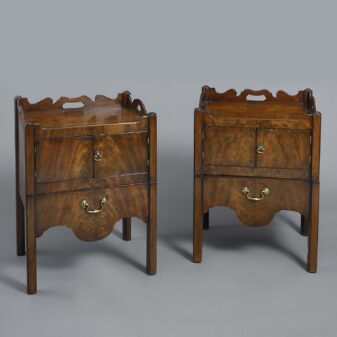 Pair of Mid-Eighteenth Century George III Period Mahogany Bedside Cabinets
1 × £8,750
Pair of Mid-Eighteenth Century George III Period Mahogany Bedside Cabinets
1 × £8,750 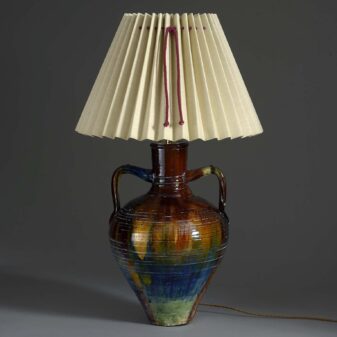 Large 20th Century Polychrome Glazed Pottery Jar Lamp
1 × £2,250
Large 20th Century Polychrome Glazed Pottery Jar Lamp
1 × £2,250 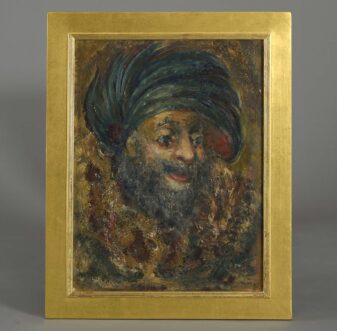 Portrait of An Arabian Man
1 × £1,650
Portrait of An Arabian Man
1 × £1,650 
